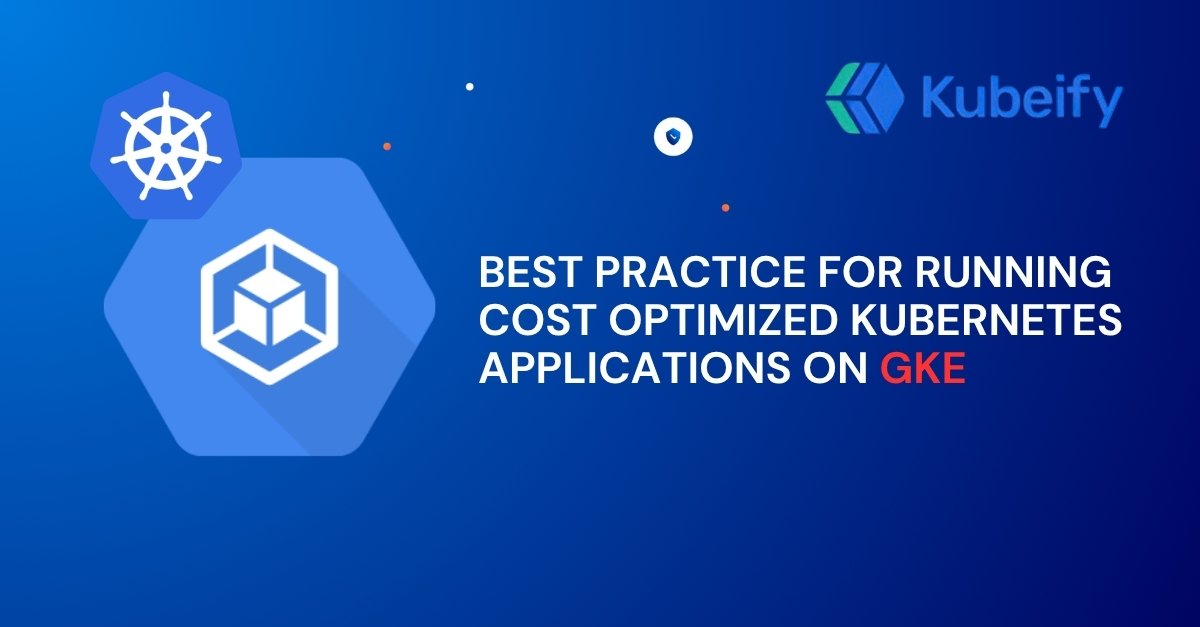AI Cloud
- Cloud Native Product Development
- Cloud Native FaaS
- Monolith to Microservices
- DevSecOps as a Service
- Kubernetes Zero Downtime

Kubernetes has transformed the way applications are deployed and managed at scale. But as organizations embrace Kubernetes, particularly through managed services like Google Kubernetes Engine (GKE), they face a common challenge: rising cloud costs.
Introduction
Why Cost Optimization Matters on GKE
Core Cost Drivers in Kubernetes on GKE
Best Practices for GKE Cost Optimization
Right-Sizing Workloads
Autoscaling (Cluster & Pod)
Choosing the Right Machine Types
Preemptible VMs and Autopilot Mode
Resource Requests and Limits
Efficient Use of Persistent Storage
Namespace and Labeling Strategy
Idle Resource Management
Cost-Aware CI/CD Pipeline
Monitoring and Cost Visibility Tools
Budgeting and Alerts with GCP
Real-World Case Study: How a SaaS Team Cut Costs by 40%
Future Trends: FinOps in Kubernetes
Conclusion
FAQs
Kubernetes has transformed the way applications are deployed and managed at scale. But as organizations embrace Kubernetes, particularly through managed services like Google Kubernetes Engine (GKE), they face a common challenge: rising cloud costs.
This guide walks you through Kubernetes cost optimization on GKE, providing actionable strategies to reduce your spend without sacrificing performance or scalability.
Google Kubernetes Engine (GKE) offers flexibility and scalability but comes at a price. Without careful planning, costs can quickly spiral out of control due to underutilized resources, poor workload planning, or misconfigured clusters.
Key reasons to optimize:
Prevent budget overruns
Improve resource utilization
Increase ROI on your cloud investment
Build sustainable and scalable infrastructure
Before diving into solutions, let’s understand the primary cost drivers:
Node usage (vCPUs, memory, GPU)
Persistent volumes
Load balancers and ingress controllers
Networking egress charges
Autoscaling misconfigurations
Over-provisioning is one of the biggest cost culprits. Use real-time monitoring tools to analyze actual CPU and memory usage, then adjust requests and limits accordingly.
Tools: Prometheus, GKE Metrics Server, Goldilocks
Cluster Autoscaler: Automatically adjusts the number of nodes.
Horizontal Pod Autoscaler (HPA): Scales pods based on CPU/memory.
Vertical Pod Autoscaler (VPA): Adjusts container resource limits dynamically.
Tip: Combine HPA + VPA + Cluster Autoscaler for intelligent scaling.
Use custom machine types to avoid overpaying for generic resources. If workloads are memory-intensive but not CPU-bound, configure VM shapes accordingly.
Tip: Use cost-effective E2 instances for test/staging clusters.
Preemptible VMs are 80% cheaper but short-lived. Ideal for stateless, fault-tolerant workloads.
GKE Autopilot abstracts away node management and charges per pod, reducing idle costs.
Avoid default settings. Set requests based on average usage and limits to cap unexpected spikes.
Bad practice: Setting both too high wastes resources. Too low can lead to pod eviction.
Use SSD only when necessary (e.g., low-latency DBs)
Regularly clean up unused Persistent Volume Claims (PVCs)
Use filestore for shared workloads instead of duplicating volumes
Namespaces and labels make it easier to allocate and analyze cost per team, environment, or service.
Use tools like Kubecost or GCP Cost Allocation to link costs with labels.
Stale pods, services, and namespaces accumulate cost over time. Schedule regular cleanups.
Use: kubectl top pods, kubectl get all –all-namespaces + custom scripts.
Run build/test jobs on preemptible nodes
Use Ephemeral environments that auto-shutdown after PR testing
Avoid keeping preview apps running indefinitely
GCP Cloud Monitoring for node/pod metrics
Kubecost for workload-level cost visibility
GKE Usage Metering to see which workloads consume most resources
GCP offers powerful tools for setting budgets and monitoring cost thresholds:
Set budgets per project or per label
Enable alerting on budget thresholds
Use Billing Exports + BigQuery for custom reports
A mid-size SaaS company running a multitenant B2B app on GKE optimized their clusters by:
Switching dev/staging workloads to preemptible nodes
Reducing CPU requests by 30% using Goldilocks recommendations
Removing stale PVCs (~200GB)
Moving from N1 to E2 machine types
Implementing HPA across all microservices
Result: Cloud spend dropped by 40% over 2 months without user impact.
As cloud-native adoption grows, so doe s the need for FinOps — financial operations for engineering. GKE-native FinOps will:
Integrate cost metrics into CI/CD workflows
Influence design-time decisions for engineers
Automate cost guardrails based on GitOps policies
Optimizing Kubernetes costs on GKE is not a one-time task — it’s a continuous process of monitoring, right-sizing, and aligning infrastructure with application needs.
By adopting these best practices and tools, your team can achieve greater performance at lower costs and build a culture of cost-conscious engineering.
Use GKE Usage Metering, Kubecost, or GCP Billing exports for workload-level insights.
Autopilot manages infrastructure and charges per pod, while Standard GKE gives full control over nodes.
Yes, preemptible VMs (GCP’s version of spot) work well for stateless workloads.
Use tools like Goldilocks and VPA to analyze and right-size requests/limits.
Yes, especially with Ingress and NodePorts. Use internal LBs or shared services if possible.
Cluster Autoscaler adjusts node count; HPA scales pods based on metrics; VPA adjusts pod resource settings.
Yes. Without limits, a rogue pod can exhaust node resources and trigger eviction.
Depends. For small, bursty workloads, Autopilot is often cheaper due to per-pod billing.
Use CLI commands and tools like K9s, Lens, or custom scripts to detect idle pods/services.
Kubecost, GCP Billing Export + BigQuery, and GKE Usage Metering are most effective.

Kubeify's team decrease the time it takes to adopt open source technology while enabling consistent application environments across deployments... letting our developers focus on application code while improving speed and quality of our releases.
– Yaron Oren, Founder Maverick.ai (acquired by OutboundWorks)
Let us know what you are working on?
We would help you to build a
fault tolerant, secure and scalable system over kubernetes.
